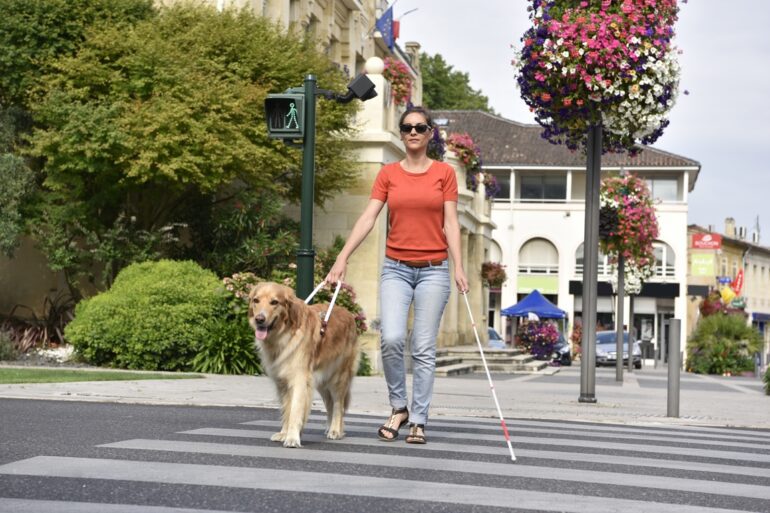TL;DR:
- AI assistants like Ask Envision, powered by OpenAI’s GPT-4, are revolutionizing the lives of visually impaired individuals.
- Integration of language models enables detailed visual descriptions, enhancing users’ independence and awareness.
- Envision and Be My Eyes have incorporated GPT-4, allowing for image-to-text descriptions and answering follow-up questions.
- AI integration offers benefits such as reading menus, finding contact information, and reading ingredient lists.
- Users can now navigate to specific parts of the text, making daily tasks significantly easier.
- The integration of AI into assistive products has a profound impact on the visually impaired community, providing unprecedented capabilities.
- Challenges include the risk of inaccurate information and incomplete understanding by AI models.
- Collaboration between AI researchers, developers, and blind individuals is essential for responsible implementation and improvement.
- Responsible usage of AI can empower visually impaired individuals, but precautions must be taken to ensure reliability and accuracy.
Main AI News:
In the realm of accessibility technology, artificial intelligence (AI) is poised to transform the lives of visually impaired individuals. Through the integration of language models like OpenAI’s GPT-4, AI assistants such as Ask Envision are empowering users by providing detailed visual descriptions and enhancing their independence.
Ask Envision, a trial service utilized by individuals like Robles, leverages the power of OpenAI’s GPT-4, a multimodal model capable of processing both images and text to generate conversational responses. By incorporating language models, assistance products for the visually impaired can now offer users a wealth of visual information about their surroundings, fostering a heightened sense of awareness and autonomy.
The evolution of Envision began with its smartphone app, initially designed to read text in photos, followed by its integration into Google Glass for a more immersive experience. The company has further expanded its capabilities by incorporating OpenAI’s GPT-4, enabling image-to-text descriptions. Similarly, Be My Eyes, an app assisting users in identifying objects, embraced GPT-4 in March, while Microsoft’s SeeingAI service is also undergoing integration testing of the advanced language model.
In its latest iteration, Envision can not only read text within images but also provide concise summaries and answer follow-up questions. This newfound ability empowers Ask Envision users to effortlessly explore menus, obtain information about prices, dietary restrictions, and even dessert options. Richard Beardsley, another early tester of Ask Envision, finds it particularly helpful for tasks such as locating contact information on bills or reading ingredient lists on food packaging. The hands-free option facilitated by Google Glass allows him to utilize the service while simultaneously managing his guide dog and cane. Beardsley expresses his satisfaction, stating that the ability to navigate directly to the desired part of the text significantly simplifies his daily life.
The integration of AI into assistive products for the visually impaired has the potential to profoundly impact users. Sina Bahram, a blind computer scientist and accessibility consultant for prominent entities like museums, theme parks, Google, and Microsoft, emphasizes the immense difference that GPT-4 has made compared to previous technology generations. Bahram asserts that the ease of use and capabilities offered by products utilizing GPT-4 empower visually impaired individuals in unprecedented ways. He recounts an instance where, thanks to Be My Eyes and GPT-4, he gained detailed information about a collection of stickers and accompanying text while walking down the streets of New York City. Bahram emphasizes that such comprehensive information was unimaginable a year ago and demonstrates the tangible benefits of AI integration.
However, there are concerns regarding the adoption of GPT-4 by the visually impaired community. Danna Gurari, an assistant professor of computer science at the University of Colorado at Boulder, organizes the Viz Wiz workshop, which aims to bridge the gap between AI researchers, blind technology users, and companies like Envision. While Gurari finds it exciting that blind individuals are at the forefront of technology adoption, she acknowledges the potential pitfalls. She highlights the inherent risks associated with a vulnerable population relying on GPT-4, which, despite its advancements, still exhibits some imperfections and incomplete understanding.
Gurari’s research has revealed instances where image-to-text models tend to generate inaccurate or even fabricated information, referred to as “hallucinations.” She explains that although the models can reliably identify high-level objects like cars, people, and trees, blind users cannot entirely trust the AI to accurately describe nuanced details such as the contents of their sandwich. Gurari emphasizes the importance of blind individuals receiving information, even if not entirely reliable, but cautions against making decisions solely based on potentially erroneous AI-generated descriptions. Incorrectly identifying medication, for instance, could have severe, life-threatening consequences.
While AI holds immense promise in revolutionizing the visual experience for the visually impaired, the responsible implementation of such technology is crucial. As blind individuals embrace AI-powered assistance, the collaboration between AI researchers, technology developers, and the blind community becomes vital to refine and enhance these systems, ensuring accuracy, reliability, and safety.
Conclusion:
The integration of AI, particularly OpenAI’s GPT-4, into assistive products for the visually impaired presents significant opportunities and challenges for the market. The potential to provide detailed visual descriptions and enhance independence is remarkable. However, ensuring the accuracy and reliability of AI-generated information is paramount to prevent potential risks and maintain user trust. Companies in this market must prioritize responsible implementation, collaborating closely with AI researchers and blind individuals to refine and enhance these systems. By addressing limitations and continuously improving the technology, the market can unlock the transformative power of AI to revolutionize the lives of the visually impaired and create a more inclusive and accessible future.

